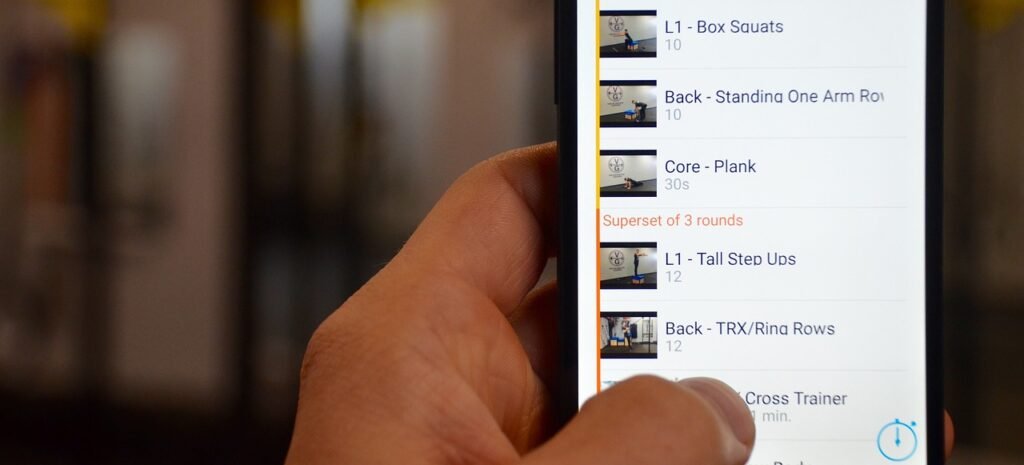
Create an Illustration that Visually Represents the Theme of Health and Fitness Tracking Through Mobile Apps
In today’s digital age, the intersection of technology and personal health has never been more apparent. Mobile apps designed for fitness tracking have gained tremendous popularity among diverse groups of individuals, enabling them to monitor their daily activities, set personalized fitness goals, and engage in healthier lifestyles. This blog post aims to delve into the various aspects of health and fitness tracking through mobile apps and will illustrate the idea visually through the lens of a vibrant scene filled with active individuals.
The Rise of Mobile Fitness Apps
The proliferation of mobile devices has transformed how we approach health and wellness. As more consumers adopt smartphones, fitness tracking apps have become increasingly prevalent, allowing users to:
- Monitor their physical activities: Activities like running, cycling, and yoga can now be logged seamlessly.
- Measure health metrics: Real-time feedback on heart rate, calories burned, and steps taken keeps users informed.
- Set and track goals: Users can establish fitness milestones and receive encouragement to achieve them.
- Engage in community: Many apps incorporate social features where users can connect with friends for motivation.
Understanding the Demographics
One of the most compelling aspects of mobile fitness apps is their accessibility and appeal across various demographic groups. Users come from all walks of life, including:
- Young professionals: Often pressed for time, these individuals incorporate fitness into their busy lifestyles using quick workouts and app tracking.
- Parents: Many parents seek ways to integrate exercise into their daily routines while managing family responsibilities.
- Seniors: Older adults often use fitness apps to maintain their health and remain active, relying on features like gentle reminders and guided workouts.
- Fitness enthusiasts: Serious athletes utilize detailed analytics provided by advanced apps for training and competition readiness.
The Anatomy of Effective Health and Fitness Tracking
For a mobile fitness app to be successful, it must provide a user-friendly interface and comprehensive features. Here are some essential elements:
1. User Interface and Experience
A clean, intuitive design enhances the user experience. Engaging graphical interfaces that display:
- Heart rate information: Shows real-time data with visual graphs.
- Steps taken: A prominent step counter encourages users to hit their daily targets.
- Calories burned: Tracking calories helps users manage their dietary habits alongside their physical activities.
2. Integration and Compatibility
Fitness apps that integrate with wearables, like smartwatches and fitness bands, provide an added level of convenience. Users can:
- Sync data: Information collected from wearables directly updates the app for seamless tracking.
- Utilize additional metrics: GPS tracking for runs and cycling can offer detailed route and distance analysis.
3. Community and Support
Access to a supportive community can significantly influence motivation and adherence to a fitness regimen. Features include:
- Social sharing: Users can share achievements with friends on social media platforms.
- Challenges and competitions: Friendly competition among users can encourage consistency and effort.
Visualizing Health and Fitness Tracking Through Mobile Apps
The best way to encapsulate the essence of health and fitness tracking through mobile apps is through an illustrative artwork that portrays a diverse group of people engaging in various fitness activities. Imagine the following scene:
The vibrant outdoor setting, such as a park or a lively street, is filled with individuals of different ages, ethnicities, and fitness levels. Each person is enjoying their fitness of choice: a runner with earbuds in sync with a heart rate monitor, a group practicing yoga while checking their breathing stats on their phones, and a cyclist tracking their distance covered. Graphical elements from the mobile fitness app interfaces surround them, showing their stats like steps taken, calories burned, and even friendly competitions they are engaged in. The scene is bathed in bright colors, symbolizing energy, enthusiasm, and the commitment to health and wellness.
The Future of Fitness Tracking Apps
As technology continues to evolve, so will mobile fitness apps. Here are some trends to watch:
- Artificial Intelligence: Advanced algorithms may provide tailored suggestions based on user data and goals.
- Augmented Reality: Future apps might incorporate AR to gamify exercise routines, making fitness fun and interactive.
- Holistic health tracking: More focus on mental well-being, nutrition tracking, and overall lifestyle balance may emerge, as users seek comprehensive wellness solutions.
Conclusion
Mobile apps have undeniably changed the way we track and engage with our fitness and health. By providing users with invaluable insights, encouraging community interactions, and integrating advanced technology, these applications help promote an active lifestyle. The visual representation of diverse individuals engaging with mobile fitness apps against a backdrop of an energetic outdoor scene encapsulates the vibrant pulse of a health-conscious society. The future remains bright as we continue to leverage technology to support our wellness journeys.
“`
